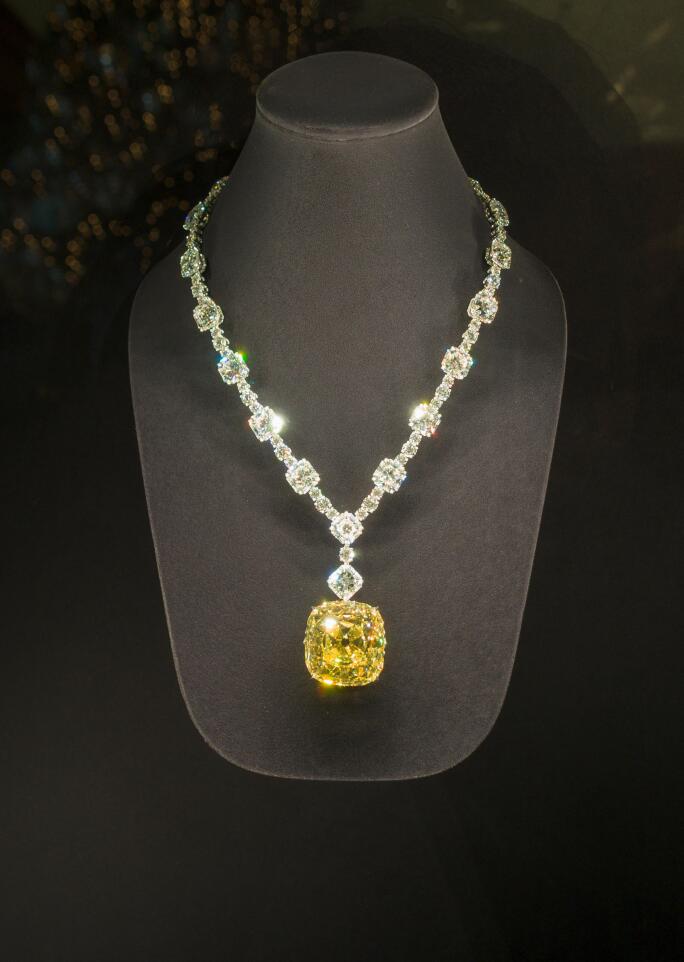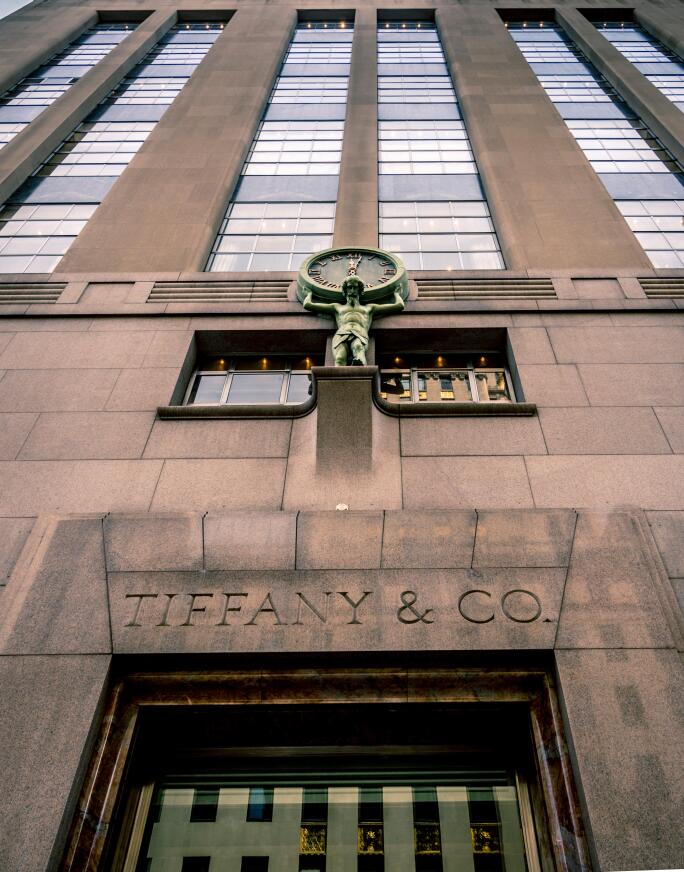Early History of Tiffany and Co
Over nearly 200 years, Tiffany & Co. has evolved into the quintessential American jeweler, renowned worldwide for its glamour and timeless style. Founded in 1837 by Charles Lewis Tiffany (1812–1902) and his partner J.B. Young as Tiffany & Young, the company began as a “fancy goods” store on Broadway in New York, with first-day sales totaling just $4.98.
In 1845, Tiffany pioneered the first direct mail catalog, the iconic "Blue Book Collection," showcasing the brand’s exquisite offerings to a wider audience. Charles Lewis Tiffany assumed sole ownership in 1853, officially renaming the business Tiffany & Co., setting the stage for its rise as a global luxury powerhouse. The company made significant strides in jewelry innovation, introducing gold fashion jewelry in 1868 and unveiling the first stopwatch, known as the Tiffany Timer, in 1866.
Key Takeaways: Tiffany & Co. Jewelry Overview
| Era / Designer | Notable Features |
| Founding & Early History (1837–1870s) | Founded by Charles Lewis Tiffany, who became the “King of Diamonds.” Introduced mail-order Blue Book catalog and acquired the Tiffany Diamond in 1878. |
| The Tiffany Setting (1886) | Debuted the six-prong solitaire ring, lifting the diamond above the band; remains Tiffany’s signature engagement style. |
| Tiffany Blue (1940s–1998) | The brand’s robin’s egg hue, later trademarked as 1837 Blue, became an enduring symbol of Tiffany’s identity. |
| Hollywood & Fifth Avenue (1961) | Featured in Breakfast at Tiffany’s, cementing the Fifth Avenue flagship as a global icon of luxury. |
| Jean Schlumberger (1956– ) | Created nature-inspired designs like the Bird on a Rock; famous for enamel bangles and vivid gemstones. |
| Elsa Peretti (1974– ) | Elevated sterling silver with organic forms like the Bone Cuff and Open Heart; redefined modern elegance. |
| Paloma Picasso (1979– ) | Introduced bold color and graphic motifs, including her iconic “X” design; a hallmark of 1980s glamour. |
| Modern Era & LVMH (2021– ) | Joined LVMH Group; revived through campaigns with Beyoncé, Jay-Z, and Basquiat’s “Equals Pi.” |
Tiffany Diamond
In 1870, Tiffany & Co. relocated to a store in Union Square, quickly establishing itself as the premier destination for New York’s fashionable and affluent elite. As the brand developed its distinctive design identity, it became celebrated for its exquisite Japonesque-style silverware and dazzling diamond jewelry—earning Charles Lewis Tiffany the title of the “King of Diamonds.”
A defining moment in the company’s history came in 1878 when Tiffany acquired an extraordinary 278.42-carat fancy yellow diamond. The following year, it was expertly cut into a breathtaking 128.54-carat gemstone, later christened the Tiffany Diamond. Today, it remains one of the world's largest and most renowned fancy yellow diamonds, symbolizing the brand’s enduring legacy of excellence and innovation in the world of fine jewelry.
Tiffany Setting
In 1886, Tiffany & Co. revolutionized the diamond solitaire ring with the introduction of the iconic Tiffany Setting. This groundbreaking six-prong design, which won numerous awards at international exhibitions, was celebrated for its ability to virtually disappear, allowing the diamond to appear as if it were floating above the band. Timeless and elegant, the classic Tiffany Setting remains one of the most sought-after and enduring engagement ring styles to this day.
Tiffany Blue
In the 1940s, Charles Lewis Tiffany introduced the now-iconic signature blue hue that has become synonymous with the brand’s identity. This distinctive robin’s egg blue, which exudes elegance and sophistication, was officially trademarked as Tiffany Blue in 1998. In 2001, the color was further cemented as a hallmark of the brand when Pantone standardized it as a custom shade, exclusively created for Tiffany & Co. and aptly named 1837 Blue—a tribute to the year of the company’s founding.
Breakfast at Tiffany's
In 1940, Tiffany & Co. relocated to its current global flagship store at the iconic corner of 57th Street and Fifth Avenue in New York City. This legendary location made its silver screen debut in the 1961 classic Breakfast at Tiffany’s, starring Audrey Hepburn. The film, which was the first ever to be shot inside the Tiffany flagship, cemented the brand’s place in pop culture history.
Acquisition by LVMH
In 2021, LVMH completed its acquisition of Tiffany & Co. for $15.8 billion. Honoring the brand’s rich heritage, LVMH launched a star-studded ad campaign featuring several iconic elements synonymous with Tiffany’s legacy. Beyoncé and Jay-Z starred in the campaign alongside Jean-Michel Basquiat's painting Equals Pi, which features a striking blue backdrop reminiscent of Tiffany’s signature Blue Box. Adding to the nostalgia, Beyoncé performed a soulful rendition of Moon River, the beloved song from the 1961 film Breakfast at Tiffany’s, famously associated with Audrey Hepburn.
Iconic Tiffany and Co Jewelry Designers
Tiffany Schlumberger
Jean Schlumberger is renowned for his imaginative, nature-inspired creations for Tiffany & Co. Born in 1907 in Alsace, France, he gained recognition designing for Elsa Schiaparelli before joining Tiffany in 1956 as Vice President. His iconic designs, such as the Bird on a Rock brooch, showcase his masterful use of vibrant gemstones and intricate goldwork. In September 2022, Sotheby's sold a Schlumberger for Tiffany & Co. Citrine, Ruby and Diamond 'Bird on a Rock' Brooch for 44,100 USD. Schlumberger’s signature paillonné enamel bangles, crafted using a 19th-century technique that layers enamel over 18k gold, remain timeless and were famously worn by Jackie Kennedy Onassis. His legacy lives on through his award-winning designs, which continue to captivate collectors and influence the world of high jewelry.
Elsa Perertti
In 1974, Elsa Peretti joined Tiffany & Co. and revolutionized jewelry design, elevating sterling silver to luxury status with her debut collection. At a time when silver was considered unsuitable for fine jewelry, Elsa Peretti boldly embraced it in her collections. Before her partnership with Tiffany & Co., the brand had not sold silver jewelry since the Great Depression.
Peretti's nature-inspired designs became iconic, including the Diamonds by the Yard, Open Heart, Bean and celebrated Bone Cuffs collection. The Bone Cuff's design was inspired by religious relics Peretti encountered in childhood. Its design is so anatomically precise that it must be purchased to fit either the left or right wrist. This bracelet remains fashionable as ever and is an enduring modern classic. In 2023, Sotheby's sold a pair of Elsa Peretti Bone Cuff Bangles for 55,000 EUR.
Paloma Picasso
Paloma Picasso, daughter of Pablo Picasso and Françoise Gilot, has been a creative force from an early age. She joined Tiffany & Co. in 1979, initially designing a table setting for an exhibition, which led to an exclusive collaboration and the launch of her iconic Paloma’s Graffiti collection, inspired by New York street art. In the 1980s, she introduced vibrant, often overlooked gemstones into her designs, epitomizing the bold glamour of the era. In 2015, Sotheby's sold a one of a kind 18 Karat Gold, Platinum, Colored Stone and Diamond Necklace and Earclips for $478,000. The necklace was created in 1985 to celebrate Picasso's 5th anniversary with Tiffany and Co. The Paloma Picasso Tiffany necklace incorporated her "X" motif and epitomized 1980s glamour with multicolored gemstones and diamonds.
Frequently Asked Questions About Tiffany & Co. Jewelry
When was Tiffany & Co. founded?
Tiffany & Co. was founded in 1837 by Charles Lewis Tiffany and J.B. Young as a New York “fancy goods” store. By 1853, Tiffany became the sole owner and rebranded it as Tiffany & Co., setting the foundation for nearly two centuries of American luxury craftsmanship.
What is the Tiffany Diamond?
The Tiffany Diamond is a 128.54-carat fancy yellow gemstone acquired in 1878 and remains one of the world’s most famous diamonds. It symbolizes the brand’s commitment to exceptional quality, rarity, and heritage.
Who are Tiffany’s most iconic designers?
Tiffany’s creative legacy includes Jean Schlumberger, known for his nature-inspired masterpieces; Elsa Peretti, who elevated silver into fine jewelry; and Paloma Picasso, who brought bold color and contemporary flair. Each helped define Tiffany’s enduring influence in the world of high jewelry.
Buy and Sell Tiffany & Co. Jewelry with Sotheby’s
Whether you're a seasoned collector or new to fine jewelry, Sotheby’s offers a trusted, seamless way to buy and sell Tiffany & Co. pieces on the secondary market.
Why Choose Sotheby’s?
- Expertly Vetted Selection
Explore rare and iconic Tiffany & Co. jewelry, from classic gold and diamond pieces starting around $3,000 to highly coveted designs like diamond engagement rings that can surpass $100,000. - Exclusive Global Access
Shop Tiffany & Co. jewelry through Sotheby’s auctions and Buy Now marketplace, backed by a worldwide network of collectors and consignors. - Flexible Ways to Buy
Purchase online or in person at our locations in New York, Paris, and Hong Kong—or work with a dedicated salon specialist to view or source specific Tiffany & Co. jewels. - Exceptional Value
Every piece is authenticated and priced by Sotheby’s specialists to reflect true market value, ensuring confidence and transparency for collectors. - Constantly Evolving Inventory
Discover vintage, modern, and limited-edition Tiffany & Co. jewelry, with new pieces added regularly to our curated selection.
Ready to Get Started?
- Browse Sotheby’s upcoming jewelry auctions in New York, London, Switzerland, Paris, and Hong Kong
- Shop Sotheby’s Buy Now Tiffany & Co. jewelry for instant access to available inventory
- Speak with a Sotheby’s jewelry specialist to consign or request a valuation for Tiffany & Co. jewelry
Trust our worldwide network of leading jewelry specialists from a globally renowned auction house established in 1744.



















